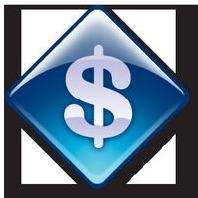
 |
|
| Financial Terms | |
| Average (across-day) measures |
|
Information about financial, finance, business, accounting, payroll, inventory, investment, money, inventory control, stock trading, financial advisor, tax advisor, credit.
Main Page: financial, tax advisor, finance, stock trading, payroll, money, business, investment, |
Definition of Average (across-day) measures
Average (across-day) measuresAn estimation of price that uses the average or representative price of a
Related Terms:Arithmetic average (mean) rate of returnArithmetic mean return. AverageAn arithmetic mean of selected stocks intended to represent the behavior of the market or some Average accounting returnThe average project earnings after taxes and depreciation divided by the average Average age of accounts receivableThe weighted-average age of all of the firm's outstanding invoices. Average collection period, or days' receivablesThe ratio of accounts receivables to sales, or the total Average cost of capitalA firm's required payout to the bondholders and to the stockholders expressed as a Average lifeAlso referred to as the weighted-average life (WAL). The average number of years that each  Average maturityThe average time to maturity of securities held by a mutual fund. Changes in interest rates Average rate of return (ARR)The ratio of the average cash inflow to the amount invested. Average tax rateTaxes as a fraction of income; total taxes divided by total taxable income. Day orderAn order to buy or sell stock that automatically expires if it can't be executed on the day it is entered. Day tradingRefers to establishing and liquidating the same position or positions within one day's trading. Days in receivablesaverage collection period. Days' sales in inventory ratioThe average number of days' worth of sales that is held in inventory. Days' sales outstandingaverage collection period. Dow Jones industrial averageThis is the best known U.S.index of stocks. It contains 30 stocks that trade on  First notice dayThe first day, varying by contracts and exchanges, on which notices of intent to deliver Last trading dayThe final day under an exchange's rules during which trading may take place in a particular Moving averageUsed in charts and technical analysis, the average of security or commodity prices Notice dayA day on which notices of intent to deliver pertaining to a specified delivery month may be Simple moving averageThe mean, calculated at any time over a past period of fixed length. Skip-day settlementThe trade is settled one business day beyond what is normal. Weighted average cost of capitalExpected return on a portfolio of all the firm's securities. Used as a hurdle Weighted average couponThe weighted average of the gross interest rate of the mortgages underlying the Weighted average lifeSee:average life. Weighted average maturityThe WAM of a MBS is the weighted average of the remaining terms to maturity Weighted average remaining maturityThe average remaining term of the mortgages underlying a MBS. Weighted average portfolio yieldThe weighted average of the yield of all the bonds in a portfolio. NUMBER OF DAYS SALES IN RECEIVABLES(also called average collection period). The number of days of net sales that are tied up in credit sales (accounts receivable) that haven’t been collected yet. WEIGHTED AVERAGEAn inventory valuation method that calculates a weighted average cost per unit for all the goods available for sale. Weighted average cost of capitalSee cost of capital. Weighted averageA method of accounting for inventory. weighted-average cost of capitalWeighted means that the proportions of Average Collection Periodaverage number of days necessary to receive cash for the sale of Weighted Average Cost of Capital (WACC)The weighted average of the costs of the capital components dollar days (of inventory)a measurement of the value of inventory for the time that inventory is held weighted average cost of capitala composite of the cost of the various sources of funds that comprise a firm’s capital structure; the minimum rate of return that must be earned on new investments so as not to dilute shareholder value weighted average method (of process costing)the method of cost assignment that computes an average cost per Moving averageA price average that is adjusted by adding other Moving-averages chartA financial chart that plots leading and lagging Average inventoryThe beginning inventory for a period, plus the amount at the end of Moving average inventory methodAn inventory costing methodology that calls for the re-calculation of the average cost of all parts in stock after every purchase. average tax rateTotal taxes owed divided by total income. Dow Jones Industrial AverageIndex of the investment performance of a portfolio of 30 “blue-chip” stocks. weighted-average cost of capital (WACC)Expected rate of return on a portfolio of all the firm’s securities, adjusted for tax savings due to interest payments. Average Propensity to ConsumeRatio of consumption to disposable income. See also marginal propensity to consume. Average Propensity to SaveRatio of saving to disposable income. See also marginal propensity to save. Accounts Payable Days (A/P Days)The number of days it would take to pay the ending balance Accounts Receivable Days (A/R Days)The number of days it would take to collect the ending Average-Cost Inventory MethodThe inventory cost-flow assumption that assigns the average Average Amortization PeriodThe average useful life of a company's collective amortizable asset base. Days Statisticsmeasures the number days' worth of sales in accounts receivable (accounts receivable Inventory DaysThe number of days it would take to sell the ending balance in inventory at the Weighted Average Cost of Capital (WACC)A weighted average of the component costs of debt, preferred shares, and common equity. Also called the composite cost of capital. Related to : financial, finance, business, accounting, payroll, inventory, investment, money, inventory control, stock trading, financial advisor, tax advisor, credit. |